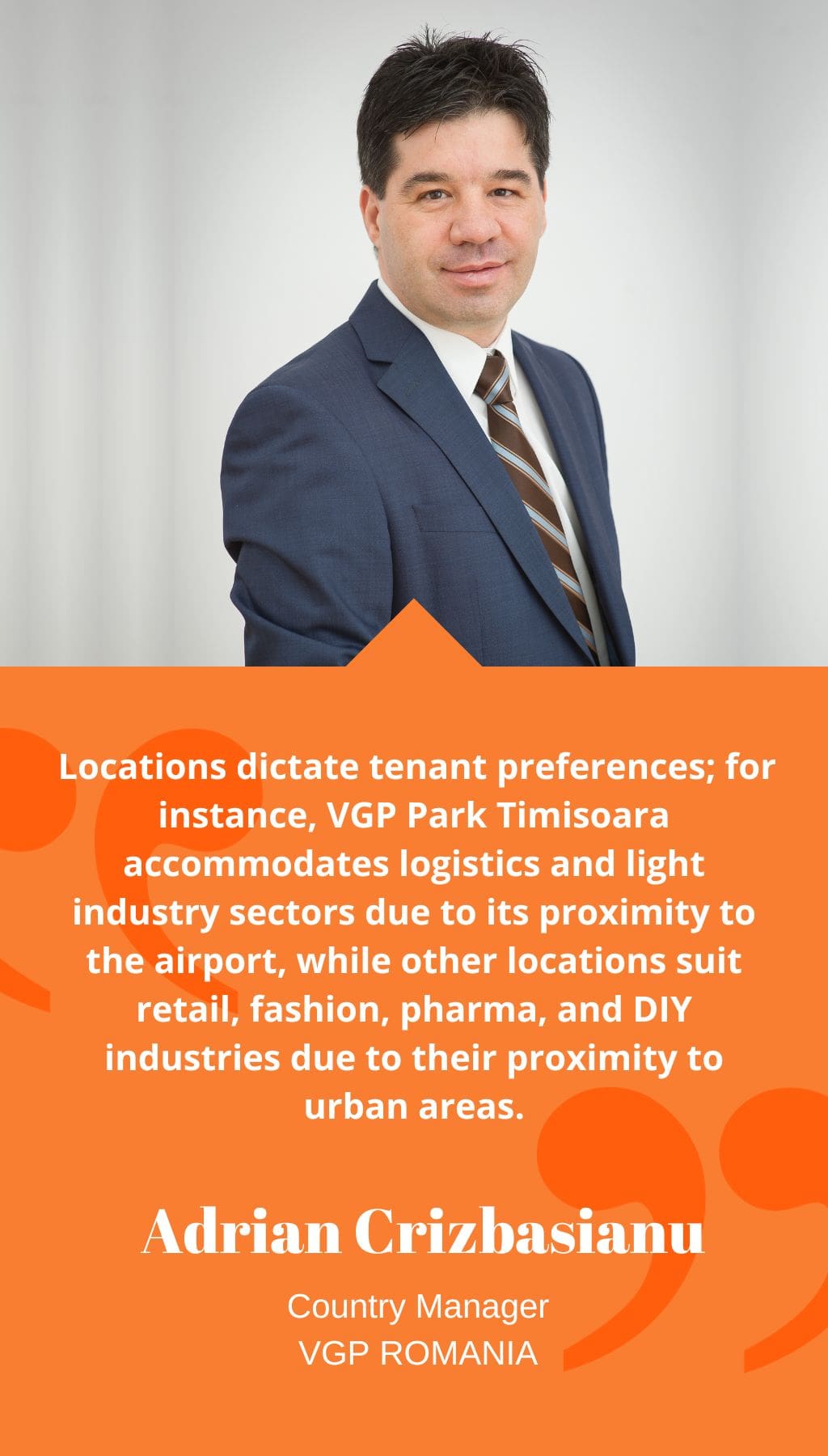
- Romania | 10 June 2021

You assumed the leadership role at VGP Romania just before the pandemic struck. How did you navigate the uncertainties that followed?
Joining VGP was a career-enhancing move for me. While the initial phase held uncertainties about the logistics and industrial sector, the pandemic eventually proved advantageous for these segments. VGP had initiated expansion plans in Romania in 2019, focusing on securing land banks, constructing warehouses, and renting them out as a long-term asset owner. My arrival coincided with the realization of these ambitious development plans.
With a strong presence across Europe, how does Romania fit into VGP’s broader vision?
Germany currently holds a significant share, around 60%, in our portfolio, but emergent markets like Benelux, Czech Republic, Spain, Italy, and Hungary are rapidly growing. In Romania, within a year, we’ve made substantial progress, inaugurating warehouses and initiating more projects, poised to exceed a quarter-million square meters.
What industry segments are propelling this increased demand?
Our multi-tenant parks cater to diverse industry profiles. Locations dictate tenant preferences; for instance, VGP Park Timisoara accommodates logistics and light industry sectors due to its proximity to the airport, while other locations suit retail, fashion, pharma, and DIY industries due to their proximity to urban areas.
VGP secures prime locations for land acquisition. What criteria guide the selection of park locations?
The CEO makes final decisions after site visits. Ideal locations boast visibility, proximity to existing road/rail infrastructure, and are situated near urban regions and expressways. Securing such prime locations remains challenging, but we’ve acquired several plots that meet our criteria.
Sustainable development is a priority. How do tenants respond to these measures, particularly concerning costs?
Our parks adhere to BREEAM Very Good certification standards, emphasizing green and energy-saving features. Additionally, we install photovoltaic panels to generate green energy. Long-term industrial tenants invest significantly in warehouse fit-outs and value modern technologies, fostering a mutually beneficial partnership for the environment and communities.
What distinguishes Class A sustainable warehouses from Class B or C counterparts?
Class A warehouses offer collaborative benefits, increased height for better storage, superior technical specifications, and streamlined access infrastructure, reducing operational expenses. Class B or C warehouses, prevalent in our market, face a faster obsolescence rate.
What are VGP’s main priorities for the next two to three years in Romania?
Our aim is to expand our portfolio to nearly 1 million square meters GLA in three years. Promising performance in parks like Bucharest and Brasov, close to full occupancy in Timisoara, and a positive trajectory in Arad signal further expansion. We’re eyeing other major cities too.
Could you share a final message about the Romanian real estate market?
Despite a smaller Class A stock compared to other CEE countries, Romania offers better yields, fueling rapid development. Record demand, especially in retail, pharma, e-commerce, and courier sectors, is projected for 2021. The potential for nearshoring of production facilities to the EU’s southeastern border promises an additional surge in semi-industrial spaces. We’re confident in Romania’s industrial real estate segment and invite businesses to join our parks!














